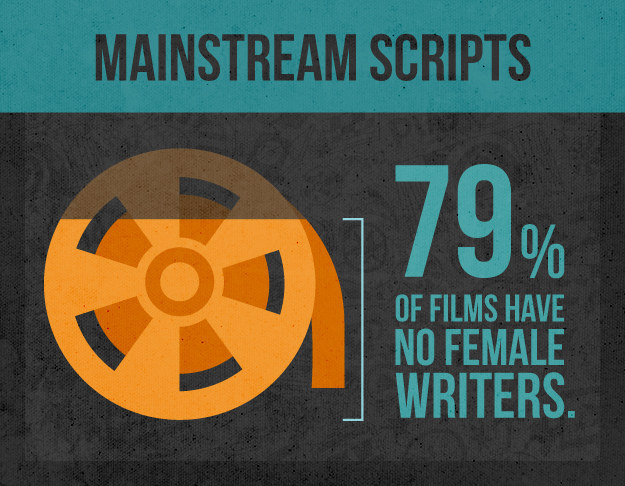Did you know that half of the people in the world are women? A new study suggests that Hollywood does not!
Looking at the top 250 movies of 2014, a recent study from the Center for the Study of Women in Television and Film at San Diego State University found that women occupied the same paltry percentage of leadership roles as they did in 1998: 17%. Which is to say, of all the directors, writers, producers, executive producers, editors, and cinematographers who worked on the most successful domestic films, 83% were men.
Martha M. Lauzen, Ph.D, director of the center that conducted the study, which is titled "The Celluloid Ceiling," described the dearth of women behind the scenes as "a complex problem with many contributing factors" in an email to BuzzFeed News.
Here's a breakdown of women in various leadership roles in the film industry in 1998 vs. 2014.
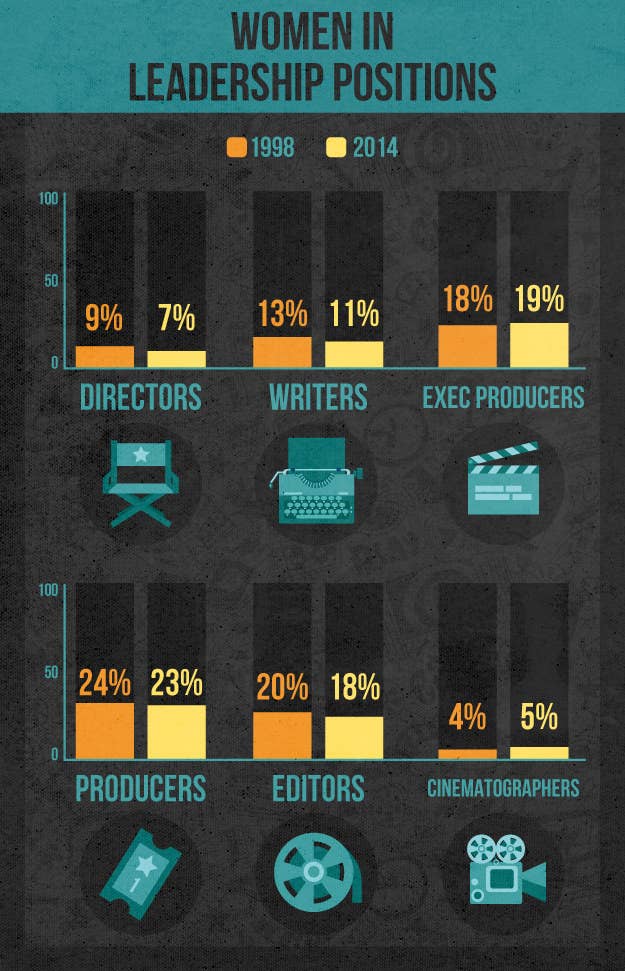
Lauzen contended that not enough people are holding men accountable for fixing Hollywood's entrenched sexism.
"The issue of women's under-representation has been treated as a 'women's issue.' As a result, when journalists speak with studio heads and executives, they tend to only ask the women, such as Amy Pascal at Sony and Donna Langley at Universal, about the lack of women directors," Lauzen wrote in her email. "Men comprise the majority of studio executives. If the status of women's employment is ever going to change, the male majority will need to lead the way."
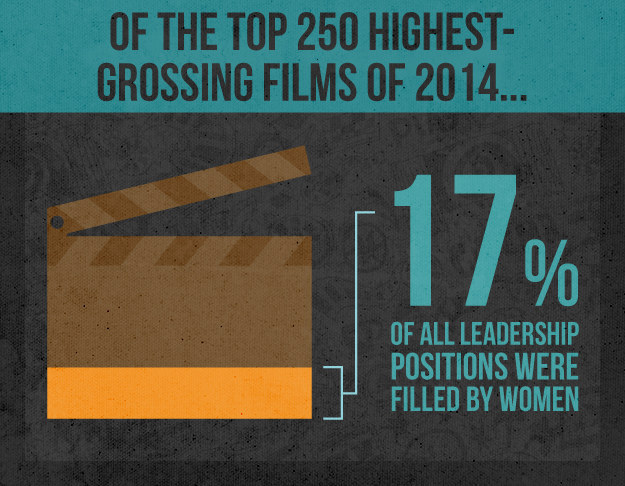
The lack of women leaders in Hollywood is a self-perpetuating problem, one that Lauzen says people in the industry rationalize in irrational ways. She told BuzzFeed News that she's heard people "suggest that, generally speaking, women have less experience than men. But if you actually look at the hiring decisions made by the studios, they regularly take risks by hiring relatively inexperienced directors." It's just that those directors tend to be male!
"Colin Trevorrow is directing the remake of Jurassic Park with an estimated budget of $150 million, with only a single previous [feature film] directing credit, Safety Not Guaranteed," she added. Hiring an inexperienced male director — much like hiring an inexperienced female director — is a risk, "but they aren't perceived as such because they resemble the demographic profile of those hiring them," Lauzen noted.
For example, all of the top 250 films of 2014 had at least two men in leadership positions. However:
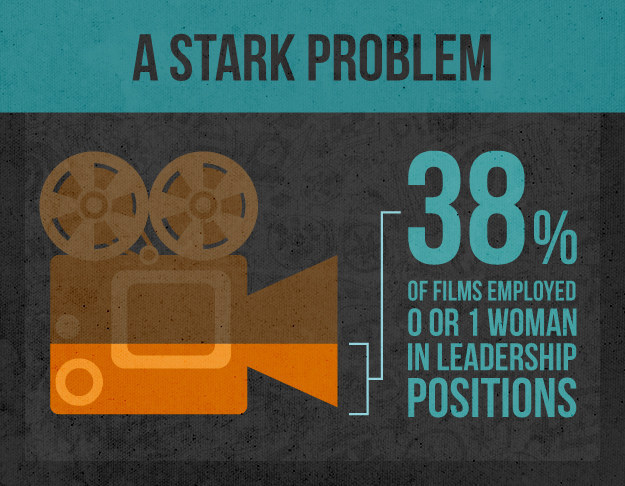
Yes, 38% of the most successful films of 2014 had one woman or NO women working as leaders behind the scenes in the roles considered. "Perhaps the most basic reason why we haven't seen any progress in the last 17 years is that many people in positions of power in the film industry, such as studio heads and union leaders, don't consider the lack of gender diversity as problematic," Lauzen wrote.
The lack of women behind the scenes seeps onto the screen itself.
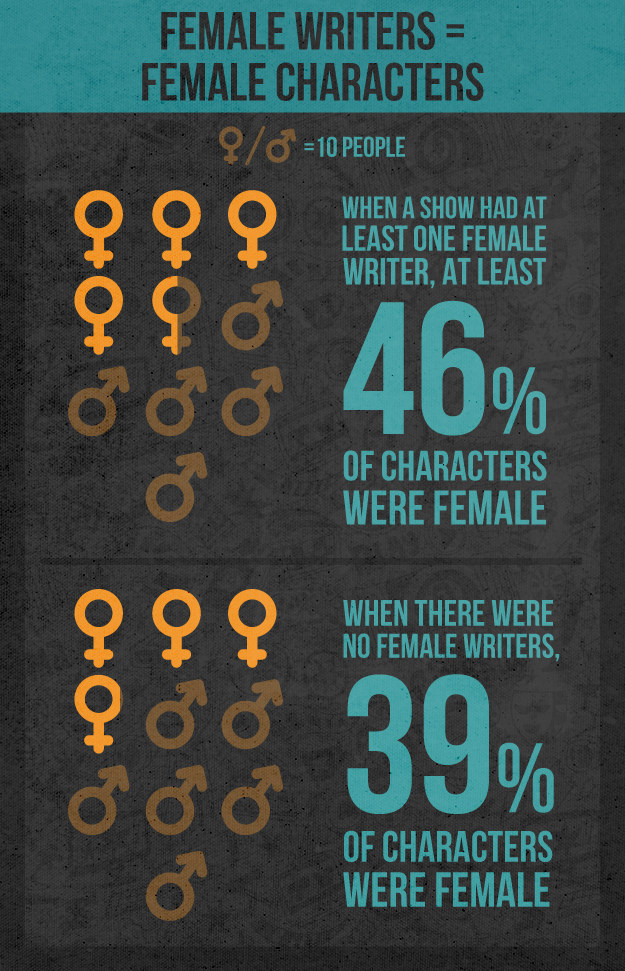
Lauzen has found in a different study, for example, that television programs with at least one female writer have more female characters.
The TV world, as it happens, is a bit more diverse (gender-wise) than the film industry: 27% of behind-the-scenes leadership positions in the 2013–2014 broadcast season were held by women, Lauzen found, versus film's 17% in 2014.
"I think television executives and advertisers have been more astute in recognizing and valuing the power of the female consumer," Lauzen told BuzzFeed News in her email. And indeed, she has found in another study that, given the same budget, films with female protagonists fare just as well as films with male protagonists at the box office. But films with female protagonists are rarely given the same budget.
The 2014 film numbers speak for themselves:
